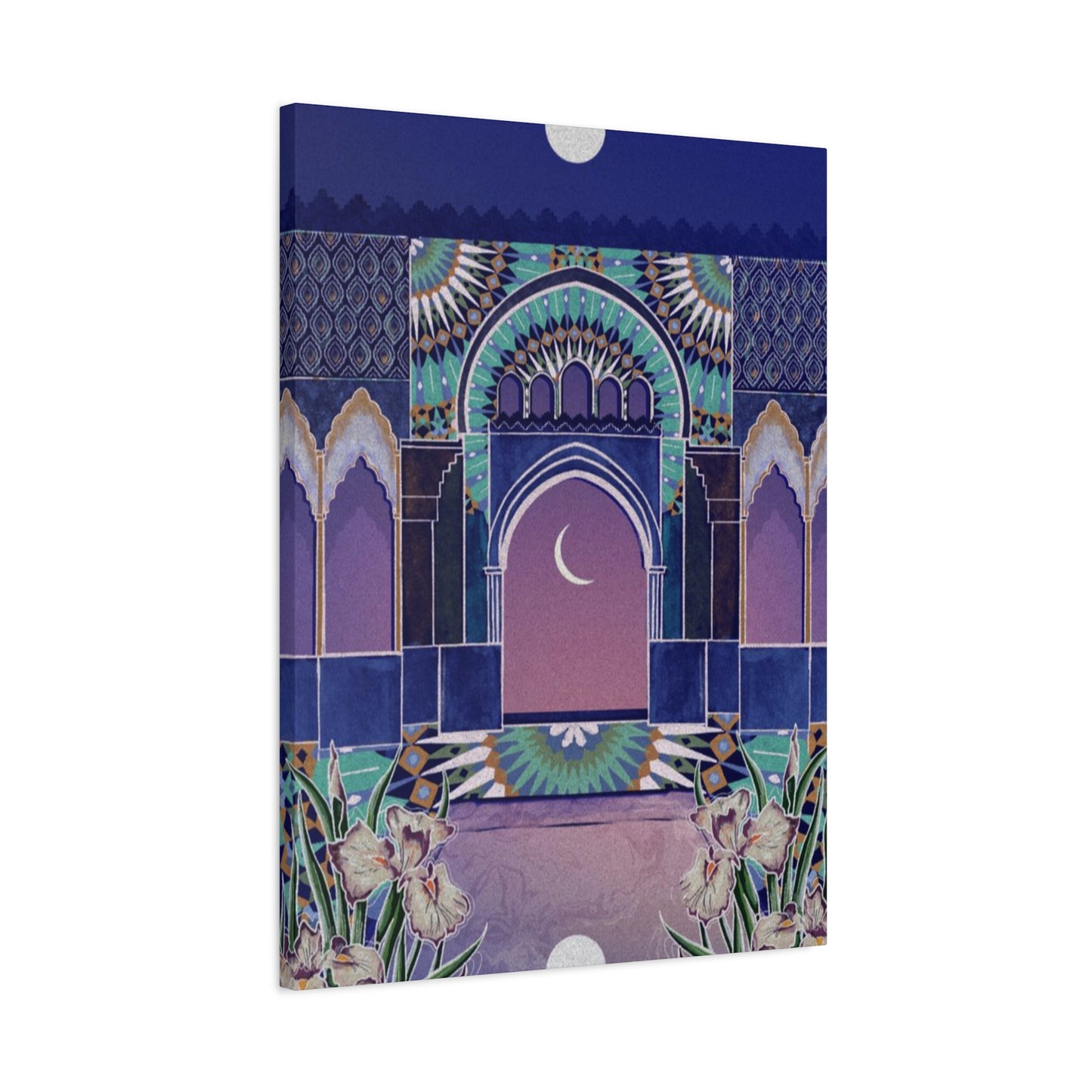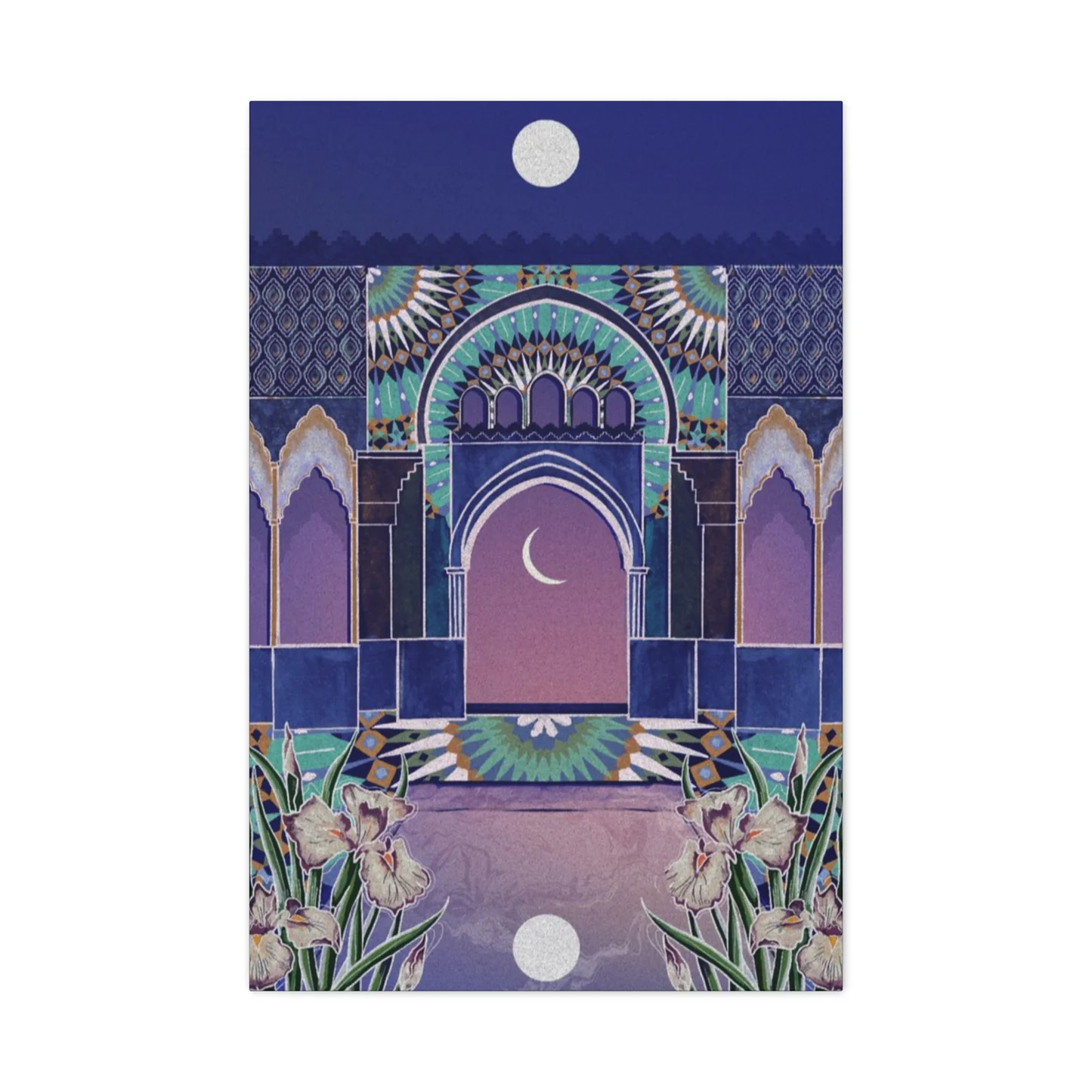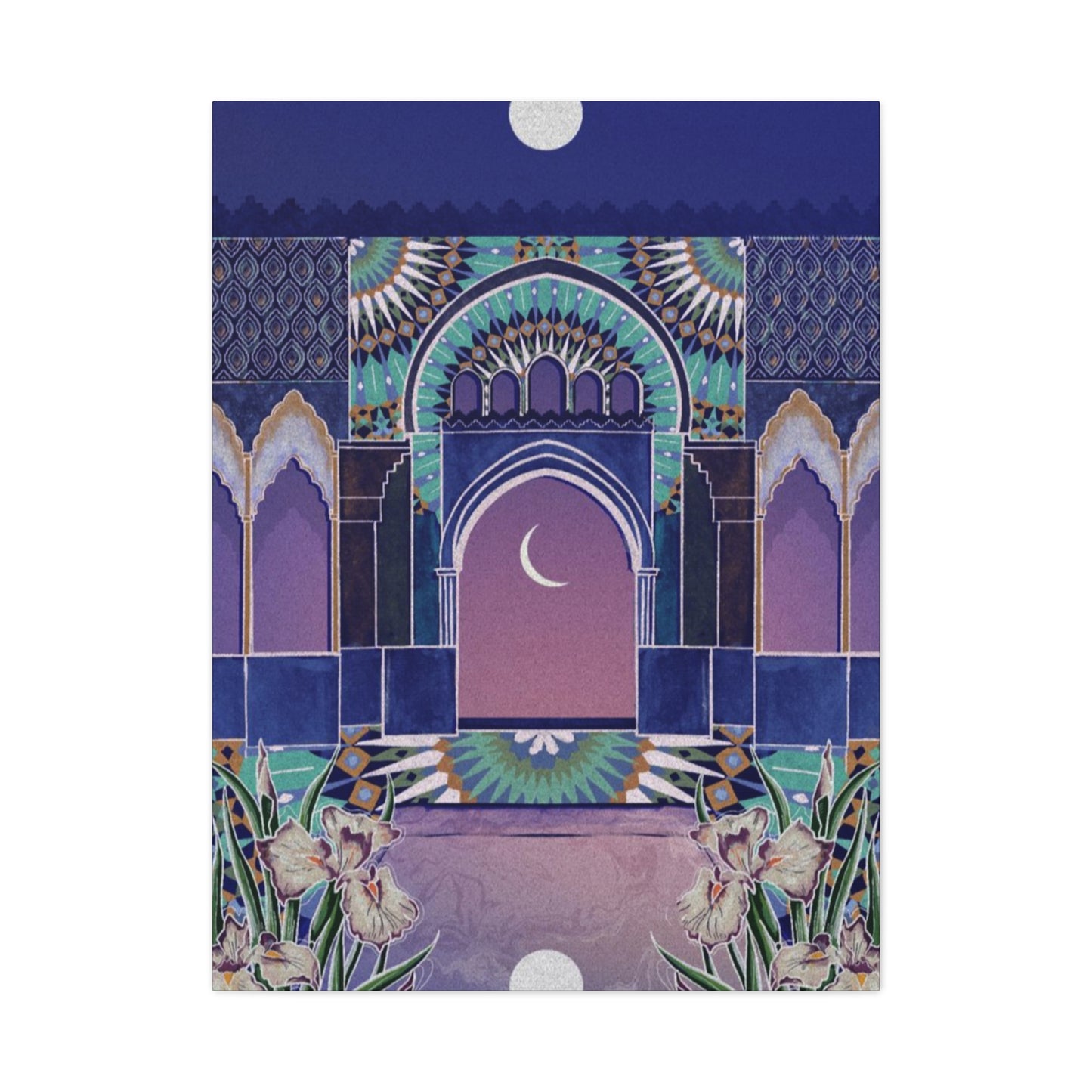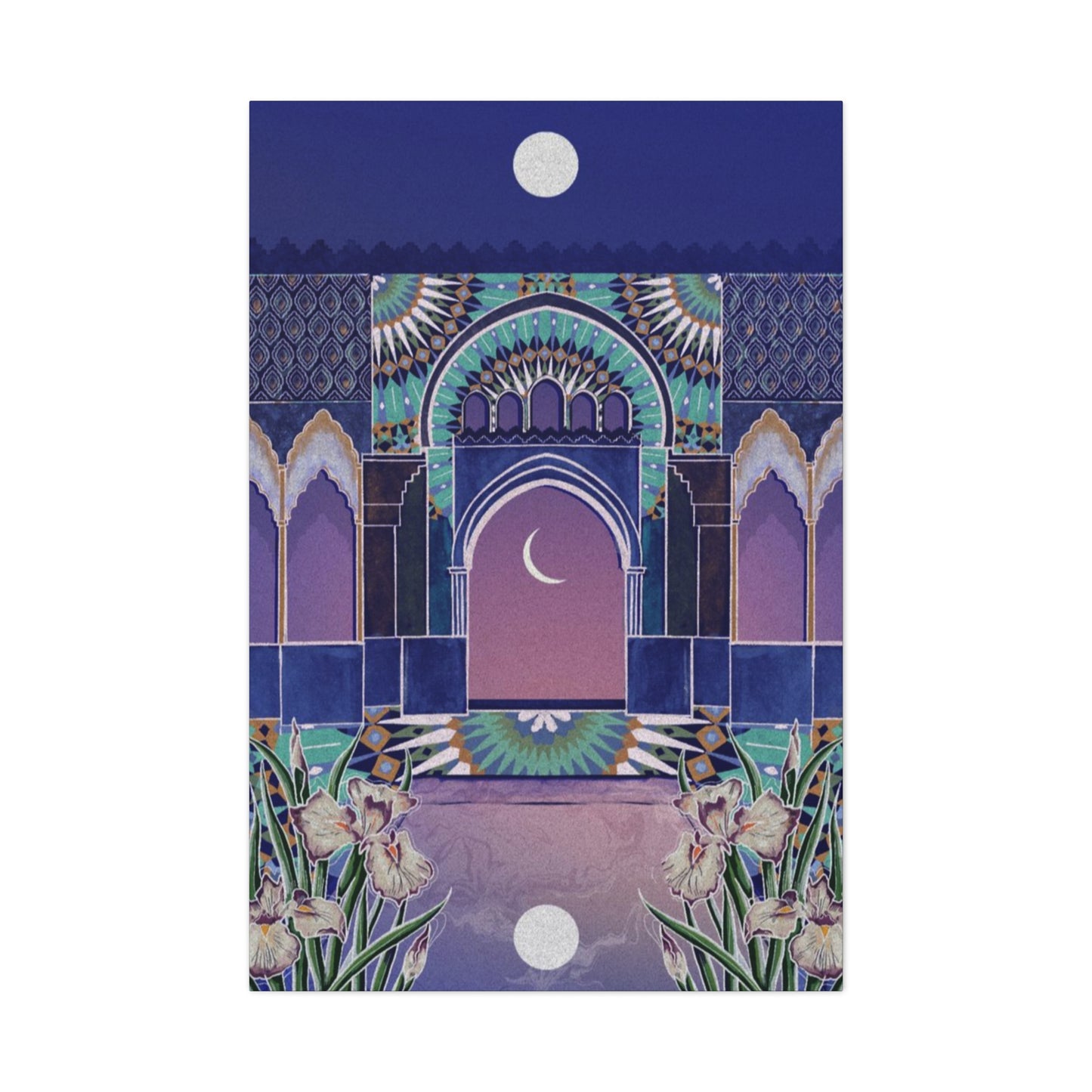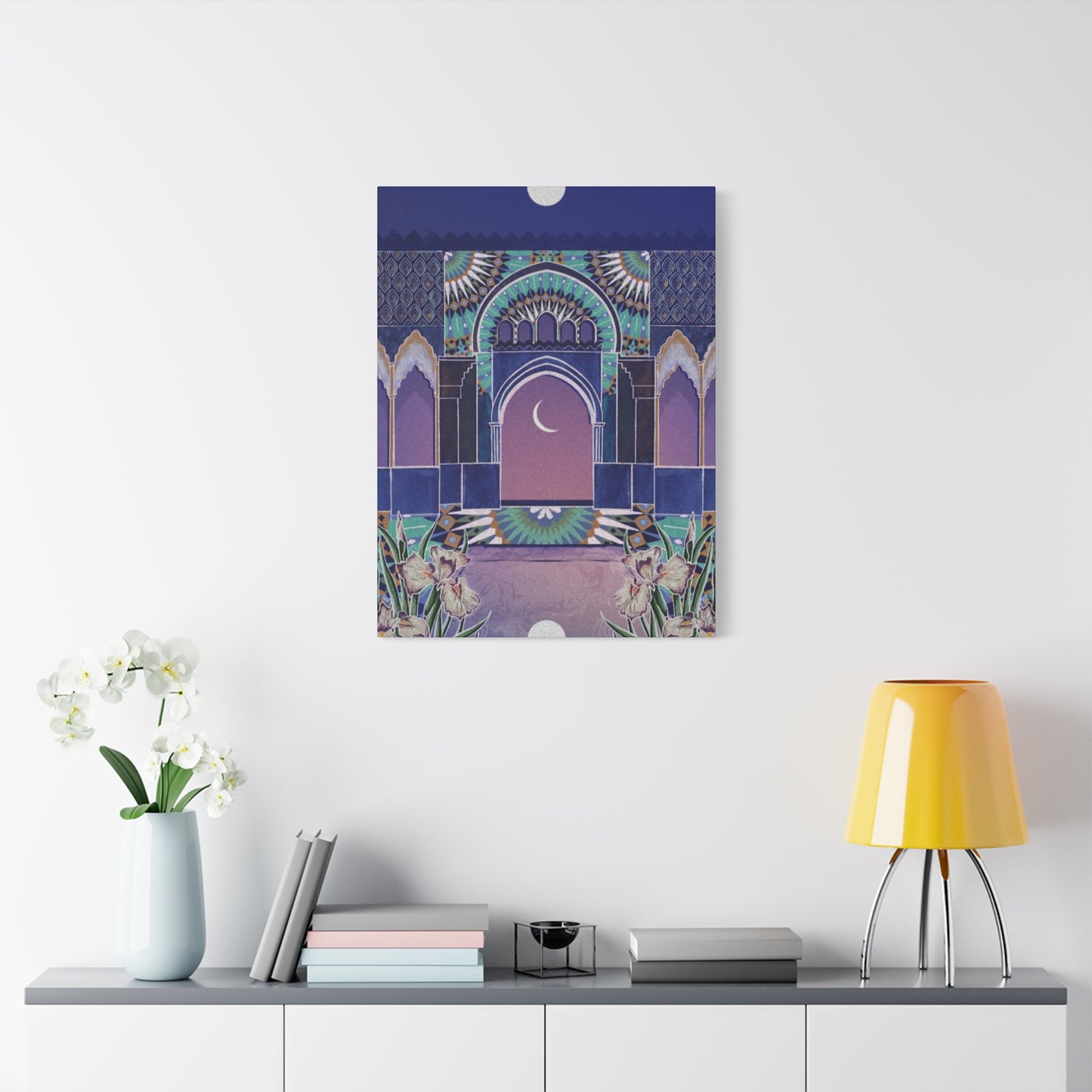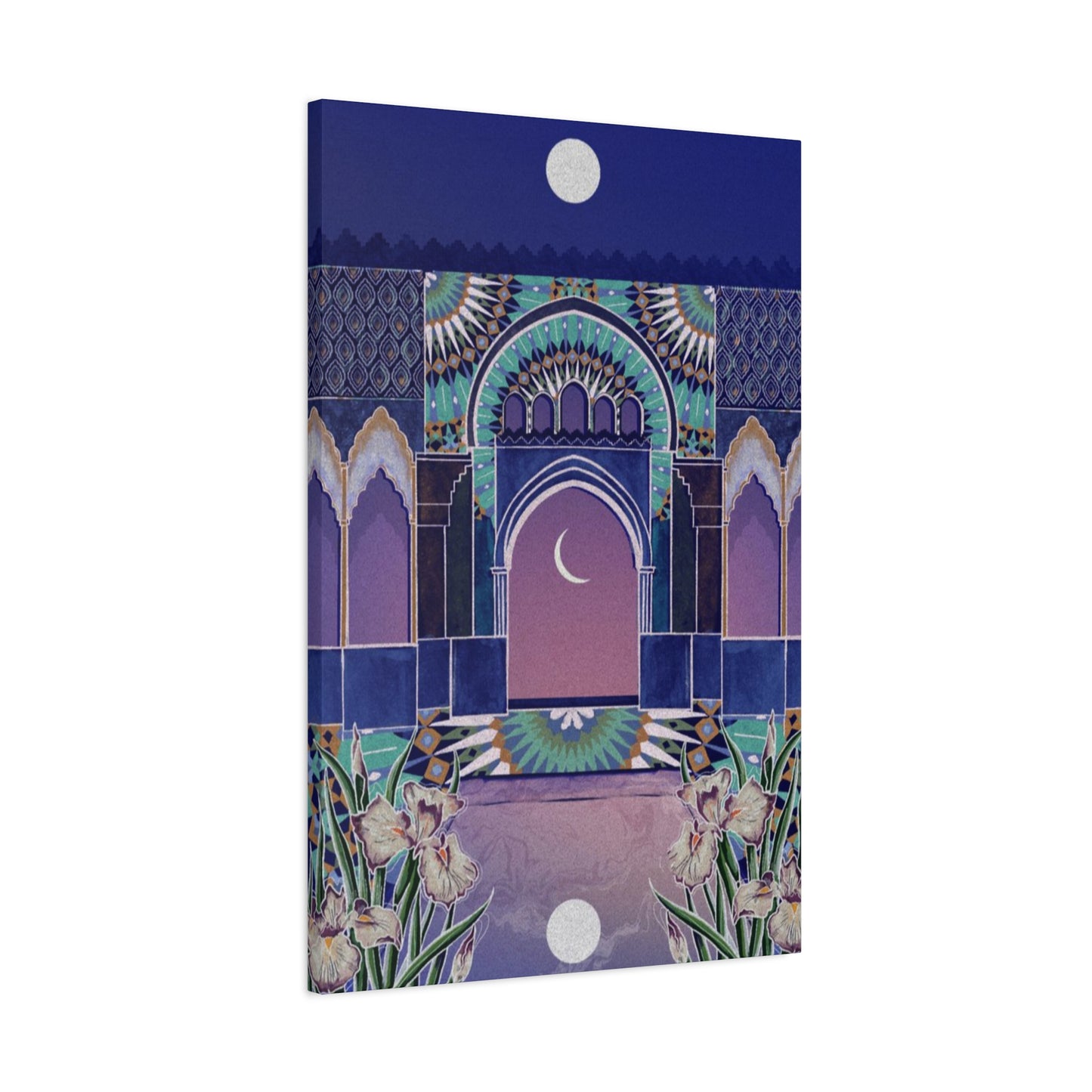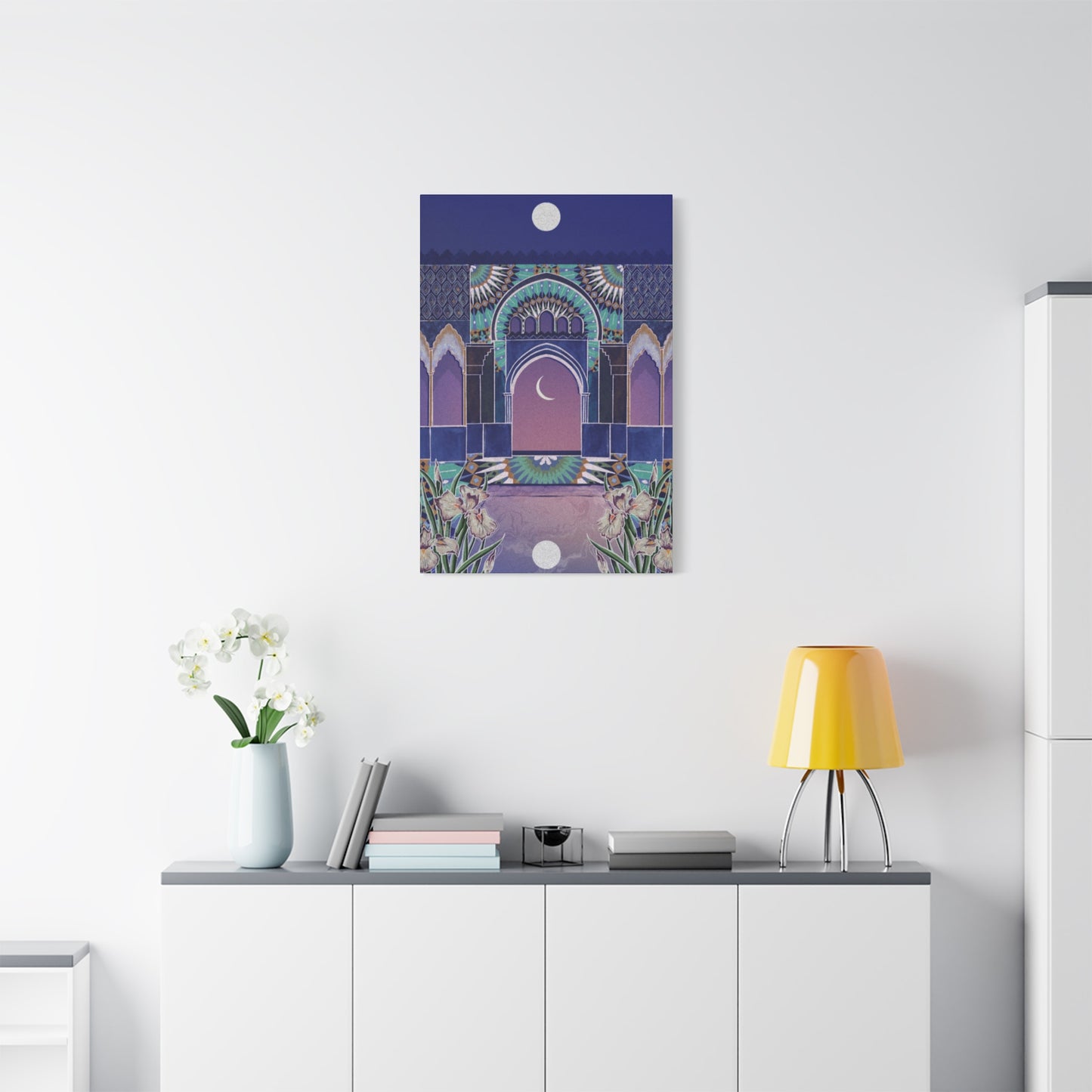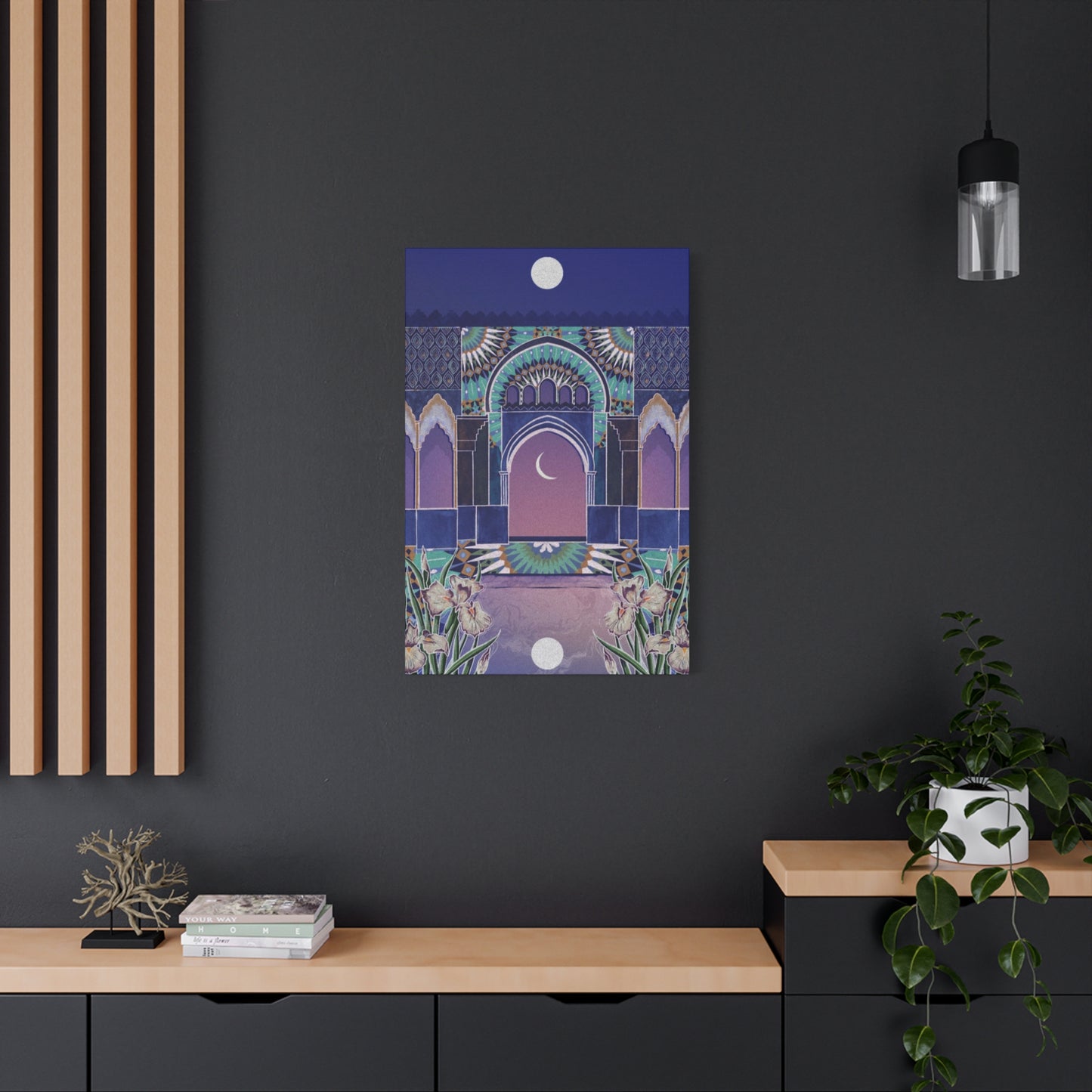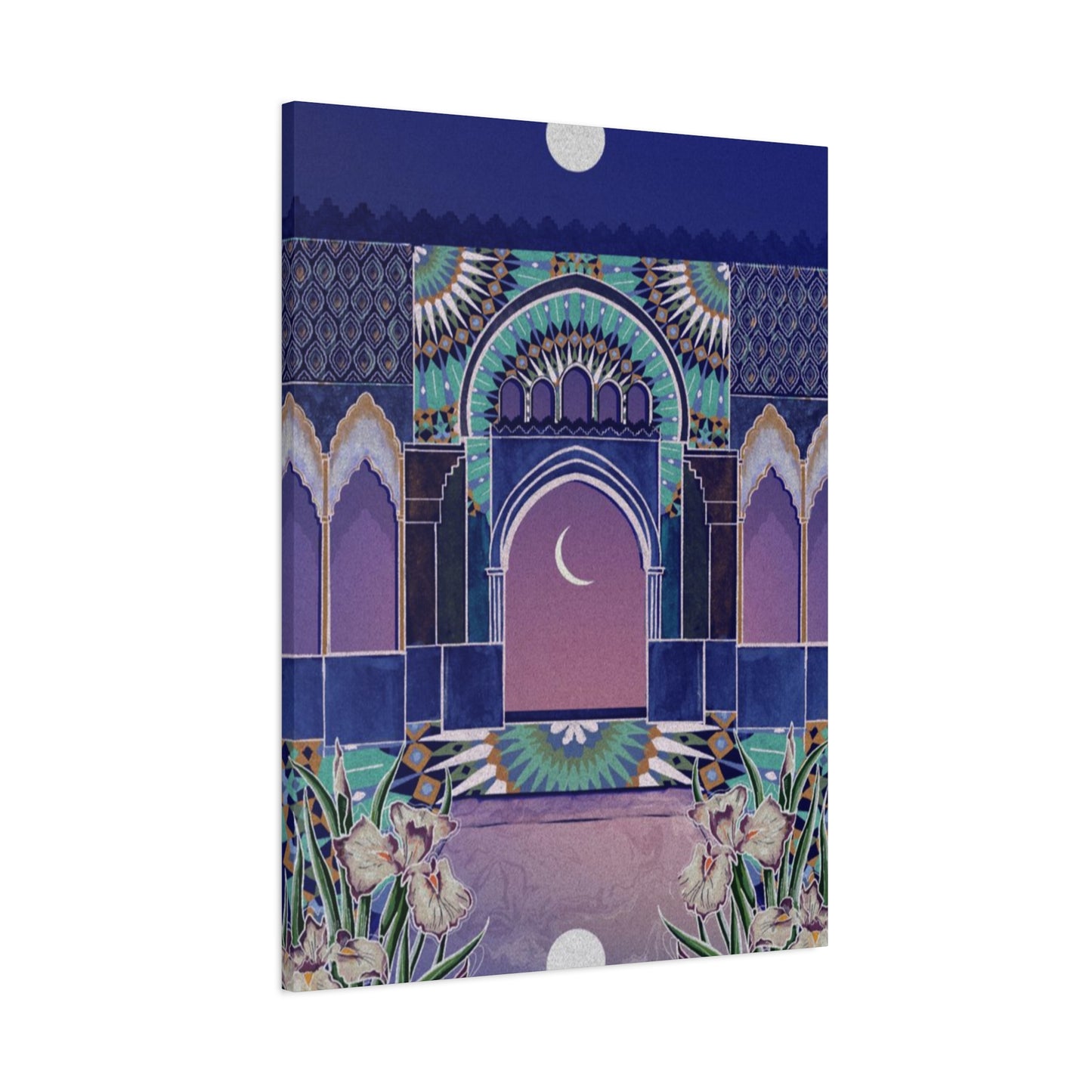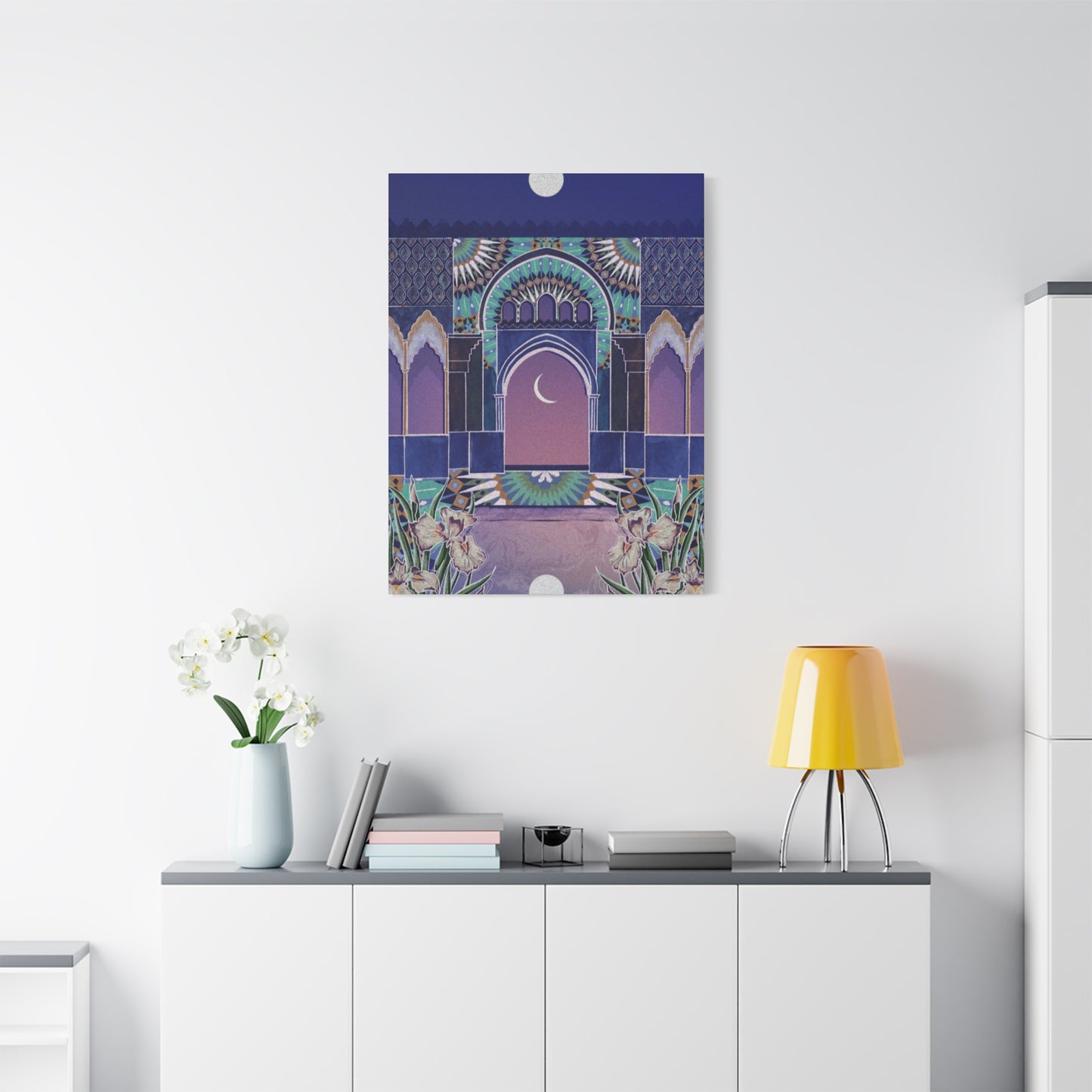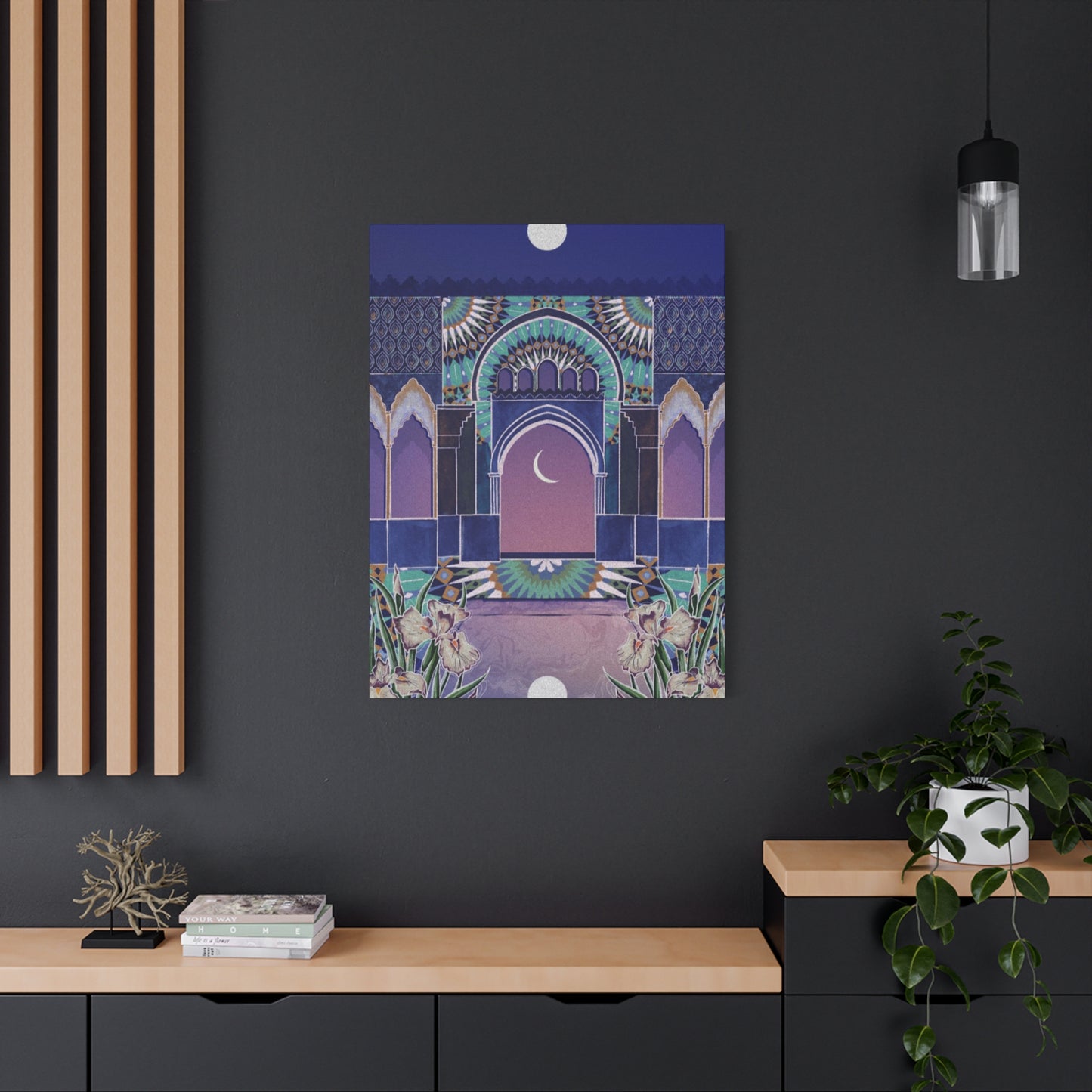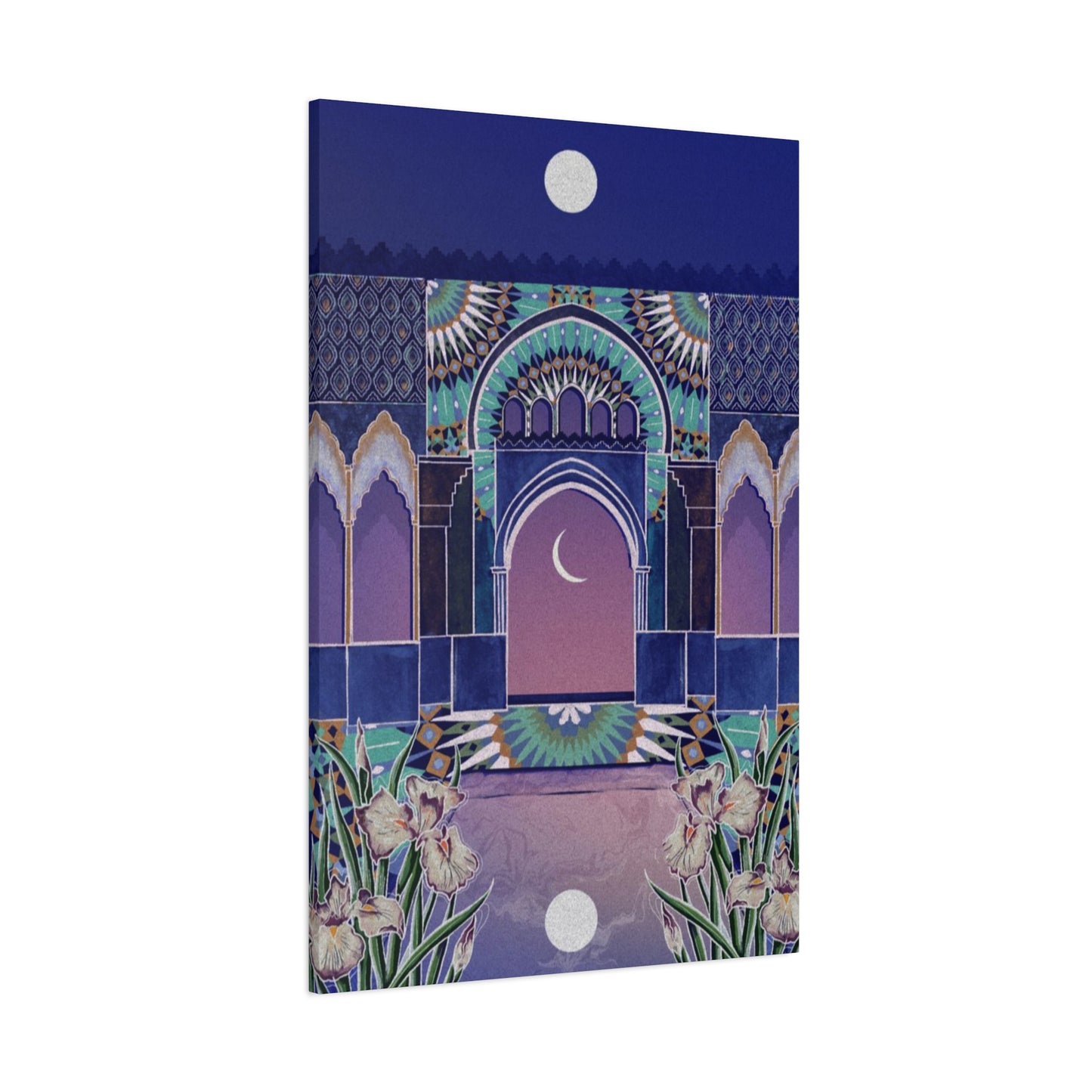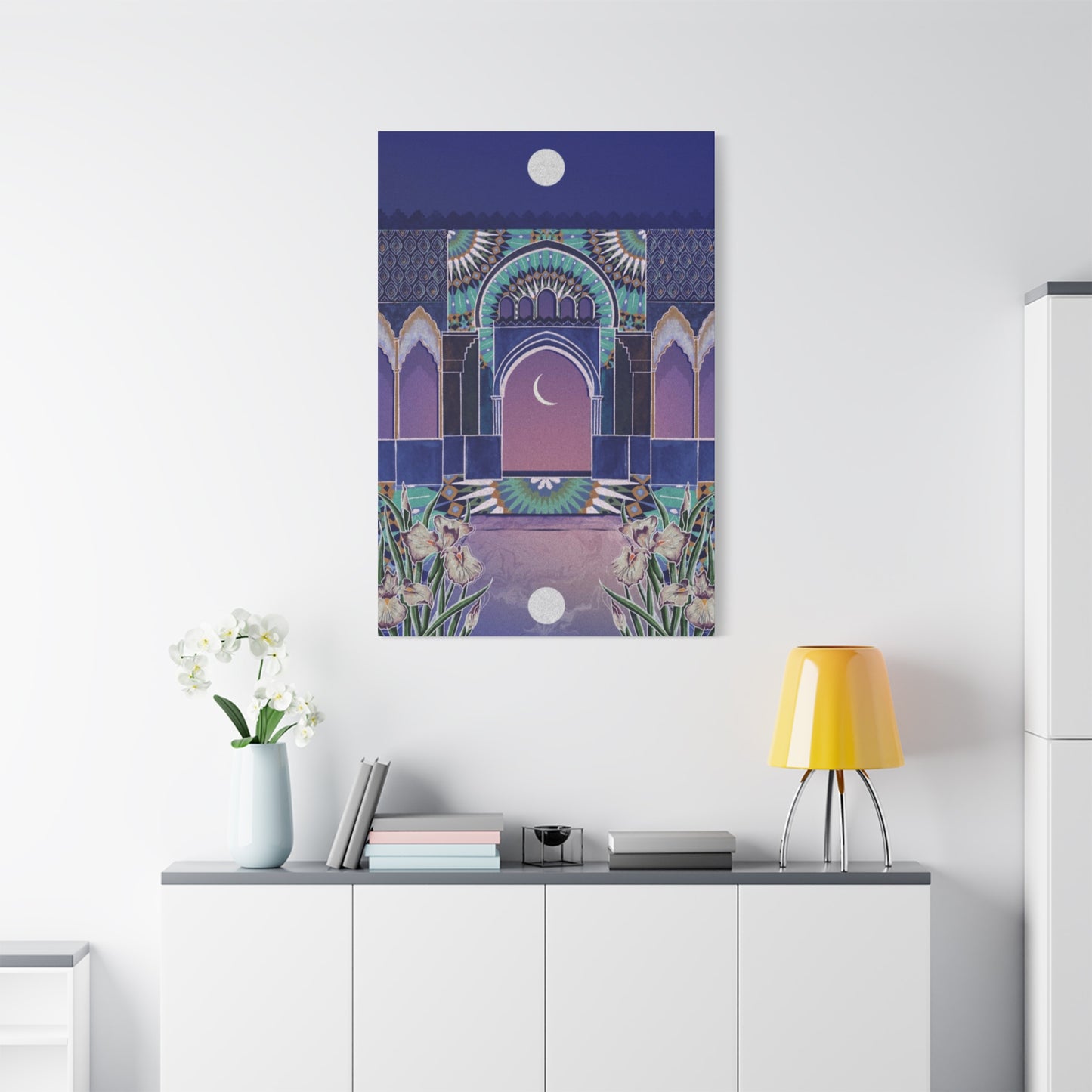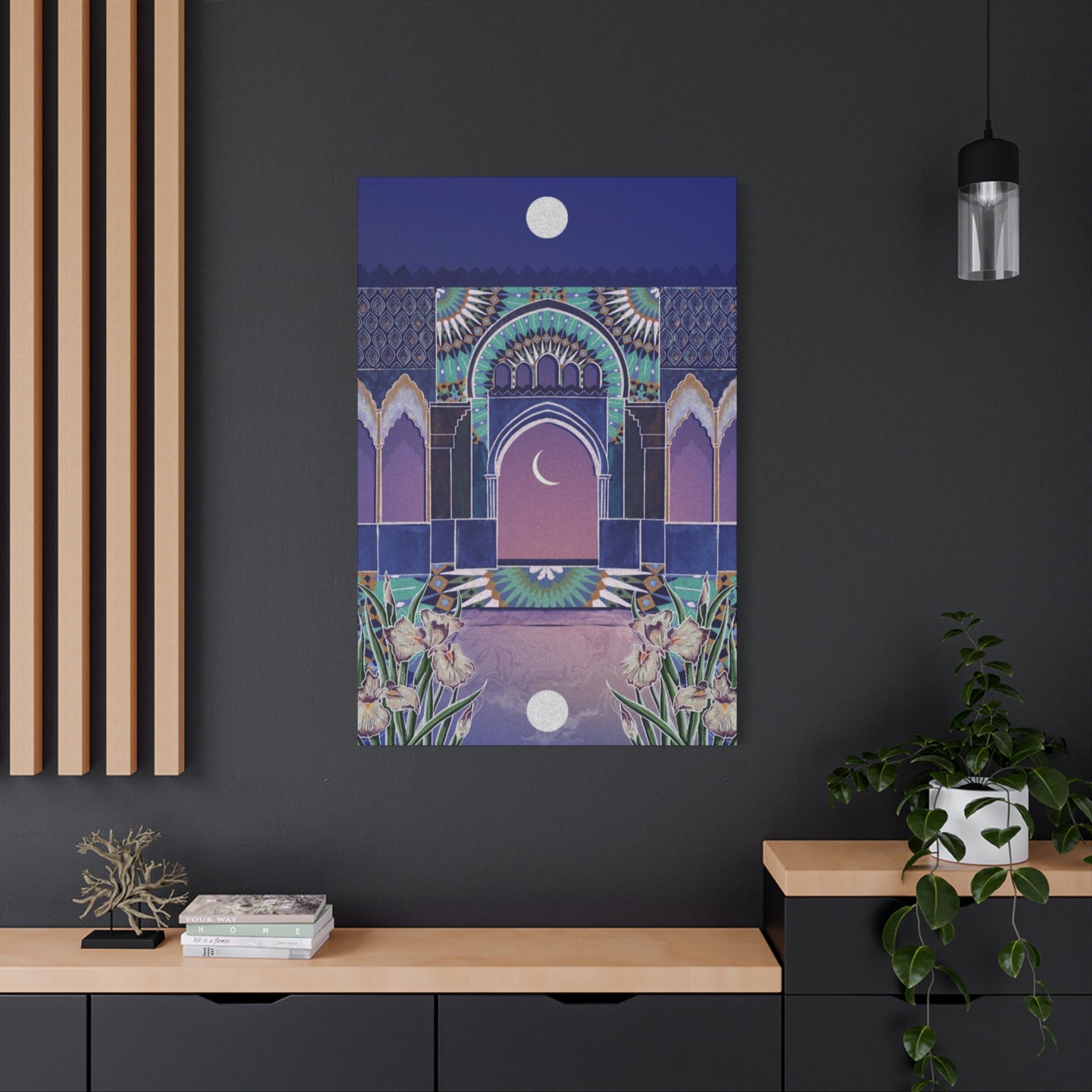Transform Your Space with Authentic Moroccan Night Design and Captivating Wall Art
The enchanting world of Moroccan interior design has captivated homeowners and decorators worldwide with its rich cultural heritage and stunning visual appeal. When darkness falls and the evening ambiance takes hold, Moroccan night design creates an atmosphere of mystery, romance, and exotic beauty that transforms ordinary spaces into extraordinary sanctuaries. This comprehensive guide explores the intricate art of incorporating Moroccan night design elements and wall art into contemporary living spaces, offering detailed insights into creating an authentic North African aesthetic that resonates with timeless elegance.
Understanding the Essence of Traditional North African Evening Aesthetics
The foundation of authentic Moroccan evening aesthetics lies in understanding the cultural and historical significance of nighttime gatherings in North African traditions. For centuries, Moroccan homes have been designed to transition from bright, sun-filled daytime spaces to intimate, warmly lit evening sanctuaries where families and guests gather for conversation, tea, and celebration. This transformation relies on specific design elements that work together to create an atmosphere of comfort and sophistication.
The traditional Moroccan home showcases architectural features specifically designed to enhance the evening experience. Thick walls retain coolness during hot days and release warmth during cooler nights, creating a naturally comfortable environment. Courtyards with central fountains provide soothing sounds and cooling effects, while strategically placed windows and openings allow gentle breezes to circulate through interior spaces. These architectural considerations form the backbone of authentic North African design philosophy.
Color palettes in traditional Moroccan evening design draw inspiration from desert landscapes at dusk. Deep burgundies reminiscent of sunset skies, rich sapphire blues reflecting twilight heavens, emerald greens suggesting lush oasis vegetation, and warm amber tones echoing lantern light all contribute to creating the quintessential Moroccan ambiance. These colors are never used in isolation but layered together in complex patterns and combinations that create depth and visual interest.
Texture plays an equally important role in establishing authentic Moroccan atmosphere. Smooth plaster walls contrast with roughly hewn wooden beams, while soft textiles drape over hard metal surfaces. This interplay of textures creates sensory richness that engages multiple senses simultaneously, contributing to the overall immersive experience of Moroccan-inspired spaces.
The Cultural Significance of Nighttime Gathering Spaces
In Moroccan culture, the evening hours hold special significance as times for social connection, family bonding, and cultural expression. The design of spaces reflects this cultural priority, with careful attention paid to creating environments that facilitate conversation, relaxation, and shared experiences. Traditional Moroccan homes feature dedicated areas for evening gatherings, often centered around low seating arrangements that encourage intimate interaction and comfortable lounging.
These gathering spaces typically incorporate multiple levels of seating, from floor cushions to low banquettes, allowing flexibility in accommodating different numbers of guests and various social situations. The arrangement encourages circular or semi-circular configurations that eliminate hierarchical seating while promoting equal participation in conversations and activities. This democratic approach to space planning reflects deeper cultural values of hospitality and inclusivity.
Lighting in traditional evening gathering spaces follows specific patterns developed over centuries of practice. Rather than relying on harsh overhead illumination, Moroccan design employs multiple low-level light sources positioned at various heights and locations throughout the space. This creates pools of warm light separated by areas of shadow, generating visual interest and intimate zones within larger rooms. The flickering quality of traditional lantern light adds movement and life to spaces, creating an ever-changing visual environment.
The concept of the salon marocain, or Moroccan living room, exemplifies the cultural approach to evening entertaining. These spaces combine formal elegance with comfortable informality, featuring elaborate decorative elements alongside practical furnishings designed for extended periods of sitting and socializing. Every element serves both aesthetic and functional purposes, demonstrating the Moroccan philosophy of beautiful utility.
Color Theory and Palette Selection for Evening Ambiance
Selecting the appropriate color palette forms the foundation of successful Moroccan night design. Traditional North African color schemes draw from natural sources and historical dye traditions, resulting in combinations that feel both vibrant and grounded. Understanding the psychology and cultural associations of these colors helps create spaces that authentically capture Moroccan atmosphere while meeting contemporary design needs.
Deep jewel tones form the heart of traditional Moroccan color palettes. Ruby reds suggest the richness of precious gems and the warmth of desert sunsets. These intense reds appear in textiles, tilework, and painted surfaces, often combined with metallic gold accents that enhance their luxurious quality. Sapphire blues evoke the depth of evening skies and the coolness of shadowed courtyards, providing visual relief from warmer tones while maintaining intensity and presence.
Emerald greens reference the lush vegetation found in oasis gardens and courtyards, bringing natural freshness to interior spaces. These greens range from deep forest shades to brighter spring tones, often appearing in patterned tilework and textile designs. Purple and violet tones, historically associated with royalty and spirituality, add layers of complexity to color schemes, particularly in areas designated for contemplation or special occasions.
Warm earth tones provide grounding for more intense jewel colors. Terracotta, ochre, and burnt sienna reference the clay and desert landscapes of North Africa, creating connections to the natural environment. These warmer neutrals appear in plaster walls, clay tiles, and natural wood furnishings, providing a backdrop that allows brighter accent colors to shine without overwhelming the senses.
The strategic use of metallics elevates Moroccan color schemes from merely colorful to truly luxurious. Gold, brass, copper, and silver appear in lighting fixtures, decorative objects, and architectural details, catching and reflecting light in ways that enhance the overall ambiance. These metallic elements create points of visual interest that draw the eye and add sparkle to evening spaces.
Successful color application requires understanding proportion and distribution. In traditional Moroccan design, no single color dominates completely. Instead, multiple colors appear in balanced relationships, with primary tones supported by secondary and accent hues. This creates visual complexity that rewards extended viewing and prevents spaces from feeling monotonous or one-dimensional.
Architectural Elements That Define Moroccan Interior Spaces
Authentic Moroccan interior architecture incorporates distinctive structural elements that immediately establish cultural identity and create the physical framework for evening design. These architectural features have evolved over centuries to address both practical needs and aesthetic preferences, resulting in spaces that function beautifully while maintaining visual appeal.
The horseshoe arch stands as perhaps the most recognizable architectural element in Moroccan design. This distinctive shape, wider at the bottom than traditional semicircular arches, creates dramatic openings between spaces while maintaining structural integrity. These arches frame views, define circulation paths, and add rhythmic repetition to interior environments. When incorporated into contemporary spaces, horseshoe arches immediately establish Moroccan character while serving practical functions of dividing areas without blocking light or airflow.
Carved plaster work, known as gypsum sculpting, transforms flat walls into three-dimensional artistic surfaces. Traditional craftsmen create intricate geometric and floral patterns that cast complex shadows when lit from the side, adding depth and movement to otherwise static surfaces. This technique reaches its highest expression in historic palaces and riads, where entire walls become elaborate compositions of carved detail.
Wooden screens and latticework, called mashrabiya, provide privacy while allowing air circulation and filtered light passage. These screens feature complex geometric patterns created by precisely joined wooden pieces, generating intricate shadow patterns that change throughout the day as light angles shift. In evening settings, when lit from behind, these screens create magical displays of light and shadow that enhance the mysterious quality of Moroccan spaces.
Tadelakt, a traditional Moroccan plastering technique using lime plaster burnished with stones and treated with soap, creates smooth, water-resistant surfaces with subtle sheen. This finish appears on walls, in bathing areas, and on architectural features, providing a distinctive texture that catches light beautifully. The slightly uneven surface quality adds organic warmth that contrasts with the precision of geometric tilework and carved details.
Zellij tilework represents one of Morocco's most celebrated artistic traditions. Small geometric tiles, individually cut and assembled into complex patterns, cover floors, walls, fountains, and furniture surfaces. These patterns follow mathematical principles that create infinite variations within established rules, resulting in designs that feel both ordered and endlessly inventive. The glazed tile surfaces reflect light, adding sparkle to spaces and creating visual interest at floor level.
Lighting Design Principles for Atmospheric Evening Spaces
Lighting design forms the crucial element that transforms Moroccan spaces from daytime to nighttime environments. Traditional approaches to illumination create layered, nuanced lighting schemes that enhance architectural features, highlight decorative elements, and establish appropriate moods for different activities and times of day.
Pierced metal lanterns represent the quintessential Moroccan lighting fixture. These lanterns, crafted from brass, copper, or silver-colored metals, feature intricate cutout patterns that project complex shadows onto surrounding surfaces when candles or bulbs illuminate them from within. The patterns range from geometric designs to floral motifs, with each lantern creating a unique shadow signature. Hanging these lanterns at various heights throughout a space creates a constellation of light points that mimics the night sky.
Floor lamps and standing candelabras provide ambient illumination at human scale, creating pools of light that define seating areas and conversation zones. Traditional designs feature elaborate metalwork bases supporting glass or fabric shades that diffuse light softly. Positioning these fixtures strategically around rooms allows flexible lighting arrangements that can be adjusted for different occasions and activities.
Wall sconces mounted at medium height cast light upward and downward, washing wall surfaces with gentle illumination that reveals texture and color. Traditional sconces feature the same pierced metalwork as lanterns, creating shadow patterns on walls that add visual interest and movement. Installing sconces on either side of doorways and arches emphasizes architectural features while providing practical lighting for circulation.
Candle illumination adds authentic atmosphere that electric lighting cannot fully replicate. The flickering quality of flame light creates movement and life in spaces, while the warm color temperature enhances the richness of jewel-tone color schemes. Traditional Moroccan spaces incorporate candles in multiple forms, from simple tea lights to elaborate candelabras, using them to supplement rather than replace other lighting sources.
Indirect lighting techniques hide light sources while illuminating spaces, creating mysterious ambiance where light seems to emanate from surfaces rather than fixtures. Installing LED strips behind architectural details, under seating platforms, or within niches creates subtle illumination that enhances spatial depth without creating glare or harsh shadows. This approach works particularly well in contemporary interpretations of Moroccan design where traditional fixtures might feel out of place.
Color temperature selection significantly impacts the overall atmosphere of evening spaces. Warm white light, ranging from 2700K to 3000K, enhances the warmth of traditional Moroccan color palettes while creating a cozy, inviting atmosphere. Cooler temperatures feel jarring in traditionally designed spaces and should be avoided except in specific circumstances where they serve particular functional purposes.
Dimming capability provides essential flexibility in Moroccan-inspired spaces. The ability to adjust light levels allows spaces to transition smoothly from active entertaining to quiet conversation to intimate late-night gatherings. Installing dimmer switches on all lighting circuits, whether controlling traditional fixtures or LED systems, ensures maximum versatility in creating appropriate atmospheres for different occasions.
Textile Selection and Layering Techniques
Textiles form the soul of Moroccan interior design, providing color, pattern, texture, and comfort that define the character of spaces. Traditional Moroccan homes feature abundant fabrics in multiple forms, from functional furnishings to purely decorative elements, all working together to create rich, sensory environments.
Floor cushions serve as primary seating elements in traditional Moroccan spaces, providing flexible arrangements that accommodate varying numbers of guests. These cushions, typically square and measuring between eighteen and thirty inches on each side, feature rich fabrics including silk, velvet, and heavy cotton decorated with embroidery, appliqué, or woven patterns. Arranging cushions in continuous lines along walls creates built-in seating, while clustering them in corners establishes intimate conversation nooks.
Throws and blankets add layers of texture and warmth to seating areas. Traditional Moroccan blankets feature bold geometric patterns in contrasting colors, often incorporating white or cream backgrounds with vibrant accent tones. These textiles, casually draped over seating or folded decoratively, invite guests to wrap themselves in comfort while adding visual interest through their patterns and colors.
Curtains and drapes soften architectural lines while controlling light and privacy. Sheer fabrics filter daylight and create mysterious evening silhouettes when backlit, while heavier materials block light completely and provide insulation. Traditional Moroccan window treatments often feature elaborate passementerie, including tassels, fringe, and decorative tie-backs that add ornamental detail.
Table coverings transform dining and serving surfaces into decorative focal points. Traditional Moroccan tablecloths feature intricate embroidery, often incorporating metallic threads that catch light and add sparkle. Layering multiple cloths in complementary patterns creates visual complexity while protecting furniture surfaces. Even casual tea services receive the enhancement of decorative textiles that elevate everyday activities into special occasions.
Pillows provide essential comfort while offering opportunities for pattern mixing and color play. Traditional Moroccan pillows feature diverse decorative techniques including embroidery, sequin work, metallic thread weaving, and appliqué. Combining pillows in various sizes, shapes, and patterns creates dynamic compositions that invite rearrangement and customization. The abundance of pillows signals hospitality and comfort, encouraging guests to settle in and relax.
Textile wall hangings serve as alternative or complementary approaches to traditional wall art. Woven rugs, embroidered panels, and decorative fabric pieces mounted on walls add warmth and softness to spaces while providing color and pattern at eye level. This approach works particularly well in rooms where hard surfaces predominate, introducing textural contrast that enhances acoustic comfort while adding visual interest.
Carpet and rug selection dramatically impacts the overall feel of Moroccan-inspired spaces. Traditional Moroccan carpets, including Berber rugs, Beni Ourain designs, and colorful kilims, provide foundation elements that anchor furniture arrangements and define spatial zones. These textiles feature distinctive patterns and color combinations specific to different regions and tribal groups, adding cultural authenticity and historical depth to contemporary interiors.
Layering rugs creates visual richness and practical comfort. Placing smaller decorative rugs over larger neutral base carpets allows seasonal changes and easy updates while protecting valuable textiles from excessive wear. This approach also creates opportunities for mixing patterns and colors in ways that feel collected and personal rather than overly coordinated.
Traditional Moroccan Wall Art Forms and Applications
Wall art in Moroccan design encompasses multiple traditional forms, each with distinct characteristics and cultural significance. Understanding these various approaches allows designers and homeowners to select and combine elements that create authentic and visually compelling environments.
Geometric tile panels represent one of the most iconic forms of Moroccan wall art. These compositions, created from individually cut and placed ceramic tiles, follow mathematical principles that generate complex patterns from relatively simple geometric shapes. Stars, crosses, diamonds, and polygons interlock in arrangements that can extend infinitely, creating the impression of infinite complexity and divine order. The glazed surfaces of these tiles reflect light, adding luminosity to walls while providing durable, easily cleaned surfaces.
Carved wooden panels showcase the skill of traditional Moroccan woodworkers who transform cedar, walnut, and other hardwoods into intricate relief sculptures. These panels feature interlacing geometric patterns, stylized floral motifs, and calligraphic inscriptions, often incorporating multiple layers of carving that create deep shadows and dimensional effects. Finished panels receive treatments of natural oils or subtle stains that enhance wood grain while protecting surfaces.
Metalwork wall pieces include decorative plates, serving trays, and purpose-made wall hangings created through hammering, etching, and piercing techniques. Brass and copper pieces feature elaborate surface decoration including engraved patterns, repousse designs, and inlaid details. These metallic surfaces catch and reflect light dynamically, creating focal points that change appearance throughout the day as lighting conditions shift.
Textile wall hangings offer softer alternatives to hard-surfaced art forms. Embroidered panels, woven tapestries, and decorative fabric pieces provide color and pattern while adding acoustic softening to spaces. Traditional designs incorporate symbolic motifs including protective symbols, fertility patterns, and geometric arrangements believed to bring good fortune.
Plaster relief work transforms walls into sculptural surfaces through traditional carving techniques. Craftsmen apply multiple layers of plaster, then carve away material to create patterns that cast shadows and catch light. This technique appears most dramatically in historic palaces and mosques, where entire walls become artistic compositions of carved detail.
Mirror work adds sparkle and spatial expansion to Moroccan interiors. Small mirrors set into carved frames or mosaic patterns create glittering surfaces that reflect candlelight and enhance the sense of luxury. Traditional approaches use mirror fragments in combination with other materials, creating complex surfaces that reward close inspection while contributing to overall spatial brightness.
Contemporary interpretations of traditional wall art forms allow modern spaces to incorporate Moroccan aesthetic principles while meeting current design preferences. Photography, painting, and mixed media works inspired by traditional motifs and color palettes create bridges between historical and contemporary approaches, allowing spaces to feel both authentic and current.
Creating Authentic Seating Arrangements and Conversation Areas
Seating design forms the functional heart of Moroccan interior spaces, providing comfortable gathering places that encourage extended socializing and relaxation. Traditional approaches to seating arrangement reflect cultural values of hospitality and equality while addressing practical needs for flexibility and comfort.
Built-in banquettes, known as sedari, line the walls of traditional Moroccan rooms, providing continuous seating that maximizes capacity while minimizing floor space requirements. These low platforms, typically measuring between eight and twelve inches in height, extend along one or more walls, creating U-shaped or L-shaped configurations. The platforms receive cushioning through dense foam or traditional fill materials, then dress with decorative fabrics that can be changed seasonally or for special occasions.
Cushion arrangements on banquettes follow established patterns that balance comfort with formality. Back cushions, typically larger and firmer than seating cushions, lean against walls at slight angles, providing lumbar support while creating decorative displays of fabric and pattern. Seating cushions top the platform surface, offering comfortable sitting positions that encourage relaxed postures. Additional throw pillows provide armrest support and decorative accents that personalize arrangements.
Low tables positioned in front of seating areas provide surfaces for serving tea, displaying decorative objects, and supporting various activities. Traditional Moroccan tables stand lower than Western furniture, typically between twelve and eighteen inches high, allowing comfortable use from floor seating positions. Table surfaces feature decorative treatments including carved wood, inlaid designs, hammered metalwork, or mosaic tile compositions.
Poufs and floor cushions supplement fixed seating, providing flexible seating options that adapt to varying numbers of guests. These movable elements allow spontaneous arrangement changes and accommodation of unexpected visitors, reflecting the Moroccan value of generous hospitality. Poufs, typically cylindrical or barrel-shaped, feature leather or fabric covers decorated with embroidery, metal studs, or woven patterns.
Furniture arrangement principles in Moroccan design emphasize creating conversation facilitating configurations rather than entertainment viewing arrangements. Seating faces inward toward central gathering points, encouraging interaction among all participants. This democratic arrangement eliminates head-of-table positions and prime seating locations, expressing cultural values of equality and inclusion.
The concept of intimate spatial scale influences traditional Moroccan furniture placement. Rather than creating single large gathering spaces, traditional design establishes multiple smaller zones within rooms, each capable of hosting small group conversations. This approach allows large gatherings to fragment naturally into manageable conversation groups while maintaining overall spatial unity.
Flexibility remains a key consideration in traditional seating design. The ability to reconfigure spaces for different occasions, from intimate family gatherings to large celebrations, requires furniture that moves easily or adaptable arrangements that accommodate varying numbers of people. This flexibility reflects the practical realities of traditional Moroccan household life where spaces serve multiple functions and household composition changes frequently.
Incorporating Metalwork and Decorative Objects
Metalwork represents one of Morocco's most celebrated artistic traditions, with skilled craftsmen creating functional and decorative objects that enhance interior spaces while demonstrating technical mastery and creative vision. Understanding the role of metalwork in traditional design helps contemporary decorators incorporate these elements effectively.
Hammered trays, available in sizes from small serving pieces to large decorative platters, showcase surface decoration techniques including engraving, repousse, and inlay work. These trays serve practical functions when placed on folding stands to create temporary tables, while also functioning as wall art when not in use. Traditional designs feature elaborate patterns radiating from central medallions, with borders containing calligraphy or geometric ornament.
Tea service equipment forms an essential category of Moroccan metalwork. Traditional tea service includes ornate teapots, glasses in filigree holders, and serving trays, all crafted from brass, copper, or silver-plated metals. These items remain in constant use in traditional homes while also serving decorative functions between tea ceremonies. Displaying tea service pieces on open shelves or dedicated niches celebrates this important cultural practice while adding metallic sparkle to interiors.
Decorative boxes and containers provide storage for small items while contributing ornamental interest. These pieces feature elaborate surface decoration and often incorporate mixed materials including wood, bone, and mother-of-pearl inlay. Traditional boxes serve specific purposes such as storing jewelry, cosmetics, or important documents, with forms and decorations reflecting their intended uses.
Architectural metalwork elements including door hardware, window grilles, and stair railings demonstrate the application of decorative metal techniques to functional purposes. Even utilitarian objects receive artistic attention in traditional Moroccan design, with every element contributing to overall aesthetic unity. Contemporary applications of this principle transform necessary functional elements into design opportunities rather than visual problems to hide.
Candle holders and lantern accessories extend the decorative impact of lighting elements. Metal candle holders in various forms, from simple stands to elaborate candelabra, provide display platforms for candles while adding decorative interest through their forms and surface treatments. These pieces often feature the same hammering and piercing techniques used in larger metalwork items, creating family relationships among decorative objects.
The practice of mixing metals adds visual interest and prevents overly matched appearances. Combining brass, copper, silver, and iron elements in single spaces creates dynamic compositions that feel collected over time rather than purchased all at once. This approach reflects the traditional accumulation of household goods through inheritance, gift-giving, and gradual acquisition.
Placement strategies for metalwork objects consider both aesthetic and functional factors. Positioning reflective metal surfaces where they catch candlelight or natural light maximizes their impact, creating points of brightness that draw attention and add sparkle. Grouping smaller objects in deliberate compositions prevents scattered, cluttered appearances while creating stronger visual statements than individual pieces achieve alone.
Exploring Pattern and Geometric Design Principles
Pattern forms a fundamental element of Moroccan decorative arts, appearing in virtually every medium from tilework to textiles to carved surfaces. Understanding the principles underlying traditional Moroccan patterns enables effective application in contemporary spaces while respecting cultural significance and aesthetic traditions.
Islamic geometric pattern tradition provides the mathematical foundation for much Moroccan decorative work. These patterns derive from circle division principles that generate regular polygons, stars, and interlacing shapes. The patterns can extend infinitely in all directions, symbolizing the infinite nature of divine creation. This mathematical basis creates order and harmony even in extremely complex compositions.
Star patterns form a major category of geometric design, with variations based on the number of points in the central star. Eight-pointed stars appear most commonly, but designs may feature six, ten, twelve, or more points. These stars connect to surrounding geometric shapes, creating intricate networks that fill two-dimensional surfaces completely. The disciplined repetition of star patterns creates rhythm and movement while maintaining perfect symmetry.
Interlacing designs create impressions of woven or braided surfaces through alternating over-and-under relationships between geometric bands. These patterns add dimensional quality to flat surfaces, suggesting depth and movement. Traditional craftsmen use interlacing patterns in carved wood and plaster work, where actual dimensional differences enhance the illusory depth suggested by the patterns themselves.
Arabesque patterns incorporate flowing, scrolling plant forms into symmetrical compositions. Unlike purely geometric patterns, arabesques include organic elements such as stems, leaves, and flowers, although these natural forms receive stylized treatment that emphasizes abstract pattern qualities over botanical accuracy. Arabesque designs often frame or fill spaces within geometric frameworks, creating layered pattern compositions.
Color application within patterns follows specific principles that enhance legibility while creating visual interest. Traditional patterns typically feature two or three main colors plus background tones, with colors distributed according to mathematical rules that ensure balanced compositions. Metallic accents often highlight specific elements, adding sparkle and emphasis to important features.
Scale variation prevents pattern overload in decorated spaces. Mixing large-scale patterns in dominant positions with smaller-scale designs in supporting roles creates hierarchy and prevents visual chaos. Traditional Moroccan spaces often feature different pattern scales on floors, walls, and ceilings, with each surface maintaining distinct pattern identities while contributing to overall decorative unity.
The practice of mixing patterns requires understanding relationships between different designs. Successful combinations share common elements such as colors, geometric principles, or cultural origins that create visual connections even when patterns themselves differ significantly. Traditional Moroccan interiors fearlessly combine multiple patterns in single spaces, trusting in shared cultural vocabulary to maintain coherence.
Color Application Strategies for Walls and Surfaces
Wall color selection and application significantly impact the success of Moroccan-inspired design schemes. Traditional approaches to wall treatment range from neutral backgrounds that showcase decorative elements to boldly colored surfaces that make strong design statements.
Neutral plaster finishes provide versatile backgrounds for traditional Moroccan interiors. Warm white, cream, and pale ochre walls allow colorful textiles, metalwork, and tile designs to command attention without competing for visual dominance. The slightly irregular surface quality of hand-applied plaster adds subtle texture that creates visual interest without pattern, allowing these seemingly simple walls to reward extended viewing.
Bold jewel-tone walls create dramatic impacts in spaces dedicated to evening entertaining or special occasions. Deep burgundy, sapphire blue, or emerald green walls envelop spaces in color, creating intimate atmospheres enhanced by candlelight and metallic accents. These intense colors require confident application and commit spaces to specific moods, making them best suited for dedicated entertaining areas rather than multipurpose spaces.
Two-tone wall treatments divide vertical surfaces horizontally, typically placing darker colors on lower portions and lighter shades above. This traditional approach has practical origins in protecting heavily used lower wall sections while creating visual interest through color division. The division point, usually occurring between three and five feet above floor level, creates natural locations for decorative borders or tile wainscots.
Ombre effects create gradual color transitions from dark to light, suggesting the transition from earth to sky. This technique requires skillful paint application but creates striking results that capture attention while maintaining sophisticated appearance. Ombre walls work particularly well in rooms with high ceilings where the full color transition has space to develop gradually.
Accent wall strategies focus intense color or decorative treatment on single walls while maintaining neutral tones on remaining surfaces. This approach allows bold design statements without overwhelming spaces with color. Accent walls behind seating areas, at room entrances, or featuring architectural elements such as arches or niches receive special treatment that highlights their importance while keeping overall spaces balanced.
Stenciling and hand-painted decoration add personalized pattern to plain walls without permanent commitment required by tilework. Traditional Moroccan decorative motifs adapted to stencil application allow reproduction of complex patterns that would be prohibitively expensive if executed in tile or carved plaster. This technique works particularly well for creating decorative borders around room perimeters or framing architectural features.
Faux finish techniques replicate the appearance of traditional plaster applications including tadelakt and textured finishes. Contemporary paint products and application methods allow creation of surfaces that suggest hand-crafted origins without requiring specialized traditional skills. These finishes add depth and character to walls while providing practical, durable surfaces suitable for modern living.
Window Treatment Design for Privacy and Light Control
Window treatments in Moroccan design serve practical functions of controlling light, providing privacy, and insulating against temperature extremes while contributing to overall decorative schemes. Traditional approaches to window covering reflect cultural values regarding privacy and modesty while addressing practical climate control needs.
Heavy drapes in rich fabrics provide maximum light blocking and insulation. Traditional designs feature lined and sometimes interlined curtains in velvet, heavy cotton, or woven wool fabrics. These substantial window coverings hang from decorative rods or concealed tracks, puddling slightly on floors to enhance the impression of generous fabric use. The weight and fullness of these curtains create sculptural folds that become decorative elements in their own right.
Sheer curtains filter light while maintaining daytime privacy. Fine cotton, linen, or synthetic fabrics diffuse harsh sunlight, creating gentle interior illumination that reveals room contents without glare or harsh shadows. When used alone, sheers maintain connection to exterior views while softening visual transitions between indoor and outdoor spaces. Layered with heavier curtains, sheers provide flexible control over light and privacy levels throughout the day.
Wooden shutters offer traditional alternatives to fabric window treatments. Interior shutters with adjustable louvers allow precise control over light admission and airflow while providing security and privacy. Traditional Moroccan shutters feature elaborate carving and pierced patterns that create interesting light effects when sunlight filters through openings. Contemporary interpretations may simplify these patterns while maintaining the essential character of traditional designs.
Mashrabiya screens represent the most distinctively Moroccan approach to window covering. These elaborately carved wooden screens feature geometric patterns created by precisely joined turned wooden pieces. The screens cover window openings completely while allowing air circulation and outward views from interior spaces. Light filtering through mashrabiya creates constantly changing patterns of light and shadow that move across interior surfaces as sun angles change throughout the day.
Window seat integration combines seating with window treatment, creating cozy nooks perfect for reading, conversation, or quiet contemplation. Cushioned platforms built into window openings provide comfortable sitting positions that take advantage of natural light and views. Overhead curtains or side panels add softness and frame these special seating areas while providing control over light and privacy as needed.
Decorative valances and pelmets conceal curtain hardware while adding ornamental detail to window treatments. These upper treatments feature elaborate shapes, decorative trims, and rich fabrics that complement main curtain panels. Traditional Moroccan valances often incorporate tassels, fringe, and metallic embroidery that catch light and add sparkle to window areas.
Hardware selection completes window treatment designs, with curtain rods, finials, tiebacks, and other elements contributing to overall aesthetic impact. Traditional designs feature elaborate metalwork in brass, wrought iron, or carved wood that becomes decorative statement in itself. Contemporary interpretations may simplify these elements while maintaining the substantial quality and decorative presence of traditional hardware.
Flooring Options That Support Traditional Design Aesthetics
Flooring selection forms a foundational design decision that impacts all subsequent decorating choices. Traditional Moroccan approaches to flooring emphasize durability, beauty, and practical climate control properties while providing appropriate backdrops for other decorative elements.
Ceramic and terracotta tile flooring provides cool, durable surfaces ideal for hot climates. Traditional tiles range from simple square terracotta pavers to elaborately patterned ceramic designs featuring geometric patterns or solid colors. The thermal mass of tile flooring helps moderate interior temperatures, absorbing heat during hot days and releasing it during cooler nights. The hard, easily cleaned surface proves practical for high-traffic areas and spaces where spills occur frequently.
Zellij mosaic tile flooring represents the pinnacle of traditional Moroccan floor treatment. Individual hand-cut tiles assemble into complex geometric patterns following mathematical principles that create infinite variations. These elaborate floors require significant skill and time to install but create stunning results that become primary decorative features. The traditional practice places the most elaborate patterns in important spaces such as entry halls and primary entertaining areas, with simpler designs in secondary spaces.
Natural stone flooring including marble, limestone, and slate provides elegant, durable surfaces with regional character. Different stone types offer varying colors and patterns, from pure white Carrara marble to richly veined colored marbles to textured slate. Stone flooring shares the thermal mass benefits of ceramic tile while offering more varied natural patterning and luxurious appearance.
Wood flooring, though less common in traditional Moroccan homes, appears in contemporary interpretations of Moroccan design. Dark hardwoods or medium-toned species with visible grain patterns work best, providing warmth and organic texture that complements other design elements. Wide plank formats suggest traditional floor construction while accommodating contemporary installation methods.
Concrete flooring receives decorative treatments including staining, scoring, and polishing that create affordable alternatives to traditional stone or tile surfaces. Stained concrete can replicate the color and subtle patterning of natural stone while providing seamless surfaces without grout joints. Polished concrete offers contemporary aesthetic that complements traditional Moroccan elements in modern spaces.
Layering rugs over hard surface flooring adds warmth, comfort, and flexibility to Moroccan-inspired spaces. This traditional practice allows seasonal changes, protects valuable carpets from excessive wear, and creates visual interest through pattern mixing. The combination of cool tile or stone base floors with warm textile coverings addresses both practical climate control needs and aesthetic preferences.
Transition treatments between different flooring materials require careful consideration to maintain visual flow while accommodating practical requirements. Traditional approaches often use decorative tile borders to frame different flooring areas, turning necessary transitions into design opportunities. These borders feature contrasting colors or more elaborate patterns that highlight spatial divisions while maintaining overall decorative unity.
Creating Focal Points Through Architectural Features
Architectural focal points anchor visual attention and organize design compositions around significant features. Traditional Moroccan spaces incorporate multiple focal points that guide circulation, establish spatial hierarchy, and provide destinations for visual exploration.
Decorative archways create natural focal points that frame views, define circulation paths, and establish architectural character. The distinctive horseshoe arch shape immediately signals Moroccan design influence while serving practical structural and spatial functions. Emphasizing archways through contrasting colors, decorative tilework, or carved plaster ornamentation increases their visual impact and clarifies spatial organization.
Niches and alcoves provide display locations for decorative objects, lighting fixtures, or small seating areas. These recessed spaces receive special decorative attention including tile backing, carved plaster surrounds, or distinctive paint colors that set them apart from surrounding walls. The three-dimensional quality of niches creates shadow patterns that add depth and visual interest to otherwise flat wall surfaces.
Fireplace surrounds offer opportunities for concentrated decorative treatment that creates seasonal focal points. Traditional Moroccan fireplaces feature elaborate tile surrounds, carved plaster mantels, and distinctive forms including corner fireplaces and double-sided models that serve multiple rooms. The hearth area receives special flooring treatment that protects against heat and sparks while contributing to overall decorative composition.
Water features including fountains and small pools bring sound, movement, and cooling effects to interior spaces. Traditional courtyard fountains feature elaborate tile work and carved stone basins that become sculptural centerpieces. Even small tabletop fountains add the soothing sound of moving water that enhances relaxation and masks unwanted noise from adjacent spaces.
Decorative screens and room dividers create permeable boundaries between spaces while offering significant visual interest. Freestanding screens feature elaborate carving, metalwork, or combination constructions that become semi-transparent walls allowing light and air passage while providing visual privacy. These movable elements offer flexibility in space planning while contributing strong decorative presence.
Built-in storage and display units combine practical function with decorative opportunity. Traditional Moroccan homes feature elaborate built-in cabinets and shelving units that receive the same decorative attention as other architectural elements. These features often incorporate carved doors, tile backing, and display niches that showcase treasured objects while providing concealed storage for less decorative necessities.
Ceiling treatments including decorative beams, painted patterns, and applied ornament draw attention upward while adding visual interest to often-neglected surfaces. Traditional Moroccan ceilings feature carved and painted wooden beams, plaster stalactite vaults, and geometric painted patterns that create overhead focal points. Even simple ceiling medallions around light fixtures add decorative interest that completes room compositions.
Conclusion:
Transform Your Space with Authentic Moroccan Night Design and Captivating Wall Art highlights the transformative power of Moroccan-inspired aesthetics in contemporary interior design. Moroccan night-themed art and décor offer a rich blend of color, texture, and pattern that evokes mystery, elegance, and cultural depth. By bringing elements of Moroccan architecture, intricate tile patterns, and atmospheric nocturnal landscapes into living spaces, homeowners can create interiors that are simultaneously immersive, vibrant, and sophisticated, turning ordinary rooms into sensory experiences that celebrate both tradition and artistic ingenuity.
The central appeal of Moroccan night-inspired wall art lies in its ability to balance opulence with intimacy. The deep blues, warm golds, and jewel-toned accents characteristic of Moroccan nights evoke serenity, luxury, and a sense of exotic wonder. When combined with intricate geometric motifs, arches, lanterns, and subtle light contrasts, these artworks convey both narrative and ambience, drawing the viewer into a visual story that celebrates cultural heritage while enhancing the mood of the space. The result is an environment that is visually captivating, emotionally resonant, and culturally expressive.
From an interior design perspective, Moroccan night wall art offers unparalleled versatility. Traditional, ornate pieces with detailed patterns and vivid colors complement bohemian, eclectic, or globally inspired interiors, adding layers of texture, color, and intrigue. More contemporary or minimalist interpretations of Moroccan nightscapes can seamlessly integrate into modern spaces, providing striking focal points that anchor the room while maintaining a sophisticated balance with neutral or subdued décor elements. By thoughtfully curating the scale, placement, and color intensity of these pieces, homeowners can create harmony between the artwork and the surrounding environment, ensuring that the interior feels both cohesive and visually stimulating.
Color and lighting play a pivotal role in conveying the essence of Moroccan night. Rich indigos, deep purples, muted golds, and hints of silver emulate the dramatic interplay of moonlight and lantern glow typical of Moroccan evenings. These hues evoke a sense of depth, mystery, and elegance, transforming walls into immersive canvases that communicate both aesthetic refinement and atmospheric nuance. The interplay of light and shadow, whether painted or printed, enhances the perception of dimensionality, making each piece feel alive and enveloping, while subtly influencing the mood of the room.
Beyond aesthetics, Moroccan night-inspired wall art carries symbolic and cultural significance. The designs often draw from centuries-old architectural patterns, artistic traditions, and spiritual motifs, reflecting a culture that values geometry, symmetry, and the poetic interplay between light and darkness. By incorporating these elements into modern interiors, homeowners create spaces that are not only visually striking but also intellectually and emotionally engaging, encouraging reflection, inspiration, and a connection to global artistic heritage.
Technically, high-quality Moroccan night wall art demonstrates mastery in pattern, composition, and detail. Artists carefully balance symmetry with artistic flair, integrating architectural elements, textures, and lighting effects to produce depth, focus, and visual intrigue. Whether rendered in traditional painting, digital media, or mixed media prints, these canvases ensure clarity, balance, and immersive impact, allowing every motif and color gradient to contribute meaningfully to the overall aesthetic and mood.
Additionally, Moroccan night art offers significant flexibility for layering and styling interiors. A single large-scale canvas can serve as a statement centerpiece, transforming the ambiance of a living room, bedroom, or study. Alternatively, multiple smaller pieces can be curated into gallery walls, creating rhythm and cohesion while highlighting cultural and artistic diversity. Complementing these artworks with textiles, lanterns, ceramics, or rugs that echo Moroccan patterns amplifies the immersive quality, ensuring the interior is cohesive, culturally resonant, and visually dynamic.
Ultimately, Transform Your Space with Authentic Moroccan Night Design and Captivating Wall Art underscores the ability of culturally inspired art to elevate interiors by blending visual richness, atmospheric depth, and emotional resonance. These works transform ordinary walls into narratives of beauty, tradition, and imagination, allowing homeowners to craft spaces that are both stylish and meaningful.
In essence, Moroccan night-themed wall art offers a timeless, versatile, and evocative approach to interior design. Transform Your Space with Authentic Moroccan Night Design and Captivating Wall Art demonstrates that by thoughtfully integrating color, pattern, and cultural storytelling, homeowners can create interiors that celebrate artistry, heritage, and ambiance, leaving a lasting impression of elegance, sophistication, and immersive charm.

















